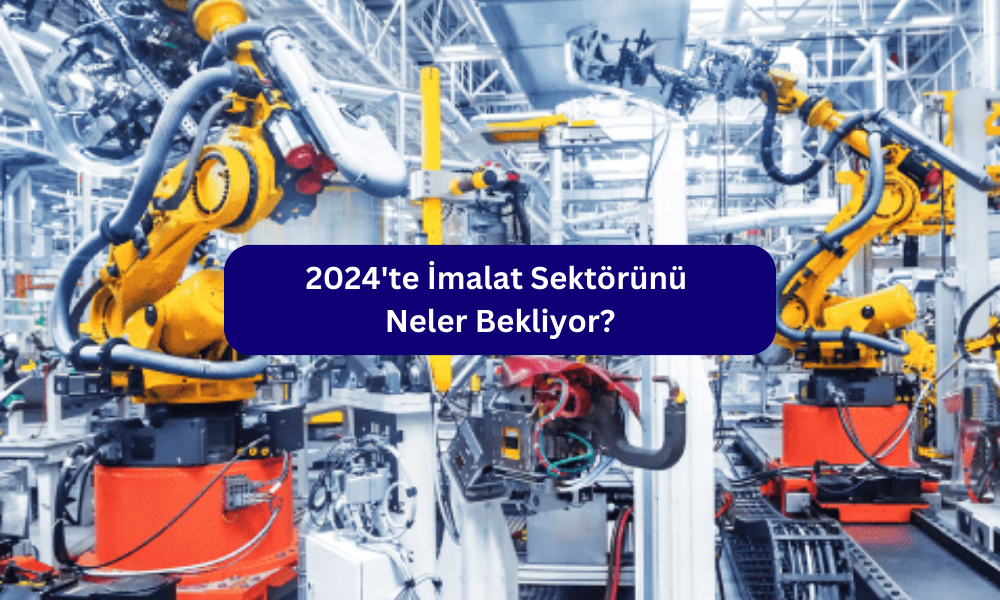Close
Request a Demo
{{ alertMsg }}
{{ alertMsg }}

Published Date
31 January 2024

Maggie Slowik and Andrew Burton’s 2024 Manufacturing Predictions
Maggie Slowik and Andrew Burton dive deep into market foresight for 2024, highlighting four key predictions that will boost operational agility in manufacturing.
Prediction #1: AI & Pattern‑Detection Investments to Jump 40% Over Three Years
In just a few years, AI spending in IT is forecast to grow by 40%. This surge will help manufacturers leverage AI‑based pattern detection to drive efficiency gains. By quickly analyzing real‑time production data against historical trends, AI pinpoints patterns and anomalies—enabling continuous root‑cause analysis, workflow simplification, and early detection of quality issues before they escalate.
As manufacturing systems grow ever more complex, AI‑driven pattern recognition becomes vital for sharpening quality control, predicting equipment failures, minimizing defects, maximizing OEE, and cutting costs. With Industry 4.0—and the forthcoming Industry 5.0—data volumes will overwhelm human analysis alone, making AI indispensable for future‑ready manufacturers.
Prediction #2: Digitally Mature Manufacturers Will Embrace Dynamic Planning via AI‑Embedded ERP/EAM
Traditional static planning no longer suffices. McKinsey finds that AI pattern‑detection tools can boost revenues by 4%, cut inventory by up to 20%, and reduce supply‑chain costs by up to 10%. IFS research shows manufacturers still face persistent supply challenges—but with AI‑powered ERP and EAM, they can optimize inventory, resources, and machine telemetry in real time.
For example, AI‑embedded ERP can predict supplier delays—allowing rapid adaptation to sourcing disruptions, shortening lead times, and minimizing the impact of supply‑chain interruptions on production.
Prediction #3: 60% of Manufacturers Will Invest in Worker‑Experience Technology by 2026
The global manufacturing sector faces a deep talent crisis. The British Chambers of Commerce reports that at least 78% of companies in construction, manufacturing, and logistics struggle to find qualified workers. An aging workforce and shifting work‑ethic “fractures” exacerbate this shortage—pushing employees to demand more flexibility and non‑monetary rewards.
Moreover, high turnover severely disrupts shop‑floor productivity and workflows. As noted at a recent IFS Customer Advisory Board meeting, “Capturing the right skills is half the battle—training and retention is the other half.” Newly hired workers often lack the efficiency and experience of those they replace, leading to productivity dips and potential quality issues.
To tackle this, 62% of manufacturing respondents in a recent survey said they could accomplish more if given better technology tools—and 58% said their technology needs had grown over the last five years. An IDC study commissioned by IFS reveals that 45% of manufacturers now prioritize using technology to enhance worker experience. Known as the “connected worker” concept, embedding digital tools in day‑to‑day operations can boost productivity, streamline workflows, and improve job satisfaction—creating a competitive edge. Combined with AI‑provided insights and precision, connected‑worker platforms could unlock over $100 billion in value and drive 20–30% productivity gains in intensive operations.
Prediction #4: 30% of Manufacturers Will Adopt Circular‑Economy Models by 2025
Linear “take‑make‑dispose” models are becoming unsustainable, unpopular, and risk‑prone. With 42% of global manufacturers worried about core raw‑material shortages—and the same percentage concerned by rising input costs—companies must rethink business models to embed circularity, reducing dependency on virgin materials and building long‑term resilience.
Bain & Company predicts that one third of executives expect their industries to be disrupted by circular‑economy initiatives that reintegrate products and materials into the supply chain. These companies create flexibility and improve margins by repeatedly reusing materials.
As regulatory frameworks—like the European Green Deal—accelerate circularity, manufacturers face growing urgency to adapt. True circular‑economy readiness requires design‑phase thinking: around 80% of a product’s environmental impact is determined in its design. Manufacturers must ensure products and their components are designed for disassembly, repair, and recycling, and plan for reverse‑logistics processes to collect end‑of‑life goods.
Traceability systems are also essential: by tracking materials, parts, and finished products throughout their lifecycles, manufacturers never lose sight of a product’s journey or environmental footprint.
Accelerating Agility & Circularity in 2024
Manufacturers are no strangers to tough challenges. Their resilience stems from adopting core technologies that drive innovation. As they move into 2024 and beyond, prioritizing efficiency and optimizing operations will be critical to standing out in an increasingly volatile marketplace.
— Maggie Slowik, Global Industry Director for Manufacturing